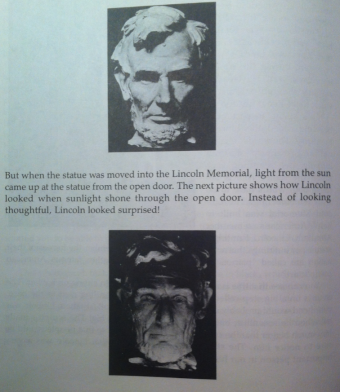Amy's DTC Blog
Saturday, November 15, 2014
Nike does it again
In the Nike ad, displayed in Launching the Imagination, Nike advertisers appeal to many audiences through the use of humor and motivation (338). A man of 80 years old is pictured running. The words say, "I run 17 miles every morning. People ask me how I keep my teeth from chattering in the wintertime. I leave them in my locker." The ad appeals to young audiences in showing them that if an 80 year old can continue running, even at his age, then exercising should be no problem for them as they are younger and should be able to handle at least the 17 miles the 80 year old accomplishes daily. On the other hand, this also appeals to the older generation because it would convince them to try some kind of physical exercise again. Well played, Nike.
Emotion that transcends time
The painting, Oath of the Haratii, by Jacques-Louis David that was painted in 1784 captured audiences when it was first shown and it is still being talked about today. The play on light and darkness enhances the emotion behind the event that is happening. On the left side, the background is dark, which plays into the idea that these three men are going into battle and may not return. The right side of the picture has a lighter background which highlights the three wives and two children of these three men. This is clearly a piece meant to evoke strong emotion about the idea that no one loses on the battlefield. Such a great piece, especially considering that Veteran's Day was celebrated this past week.
Saturday, November 8, 2014
Sculptured beauty, ugly message
The sculpture, Perseus and Medusa, by Benvenuto Ceillini is a depiction of the slaying of Medusa (269). The skill behind the sculpture and attention to detail makes the viewer want to take a closer look, but when they do, they make get more than expected. At first glance, the sculpture looks like a portrayal of a warrior that has some sort of victory in a battle. When looking closer, the viewer will realize that the warrior is standing upon the body of a female while holding her head in his left hand. The title tells the onlooker that this is a gruesome scene of Perseus defeating Medusa and victoriously holding her head out to show his prowess.
From natural to unnatural
Wood is a natural resource. When this resource is cut and shaped in order to make buildings, it becomes unnatural, to an extent. Nature has a way of taking over and shaping its surrounds to fit the purpose it serves. The sculpture, Tetra House N-3, W26 Project, by Tadashi Kawamata (262) could be seen as an interpretation of nature (wood) being cut and shaped to meet the purpose of potential builders, but rather than creating a functional structure, the domesticated wood has been utilized by Kawamata to create art. The reason this is interesting is because the wood started out naturally, was touched by humans and re-purposed for domesticated purposes, but then used to take over and obstruct a building. This is a synthetic version, created by Kawamata, of what nature can do to structures that are not tended to. In time, nature finds a way to take over and reclaim what once belonged to it.
Saturday, November 1, 2014
Poop as Art
In chapter 11 of Launching the Imagination, nature in art is discussed. One such piece is titled "Dung Beetle Pendant Brooch" by John Paul Miller. The dung beetle is typically thought of as an insect that rolls the fecal matter of other species for a living. That Miller could transform such a menial task into a piece of art is very interesting.


Lighting
Chapter 9 in Launching the Imagination holds a wealth of information on lighting. While many of the techniques that are discussed cover the medium of sculptures, this could also be applicable to computer based art, paintings, and photographs. For example, one would want to be conscientious of light placement when putting together artwork such as a photomontage on the computer. Paintings and photographs are also important areas to be aware of lighting. This is because the light source can contribute or take away from a piece of art. An example of this in a sculpture is figure 9.53, "Head of Abraham Lincoln" by Daniel Chester French. Below is a similar idea:


Saturday, October 25, 2014
The Kiss
I find the sculpture, The Kiss, by Auguste Rodin to be very interesting. The lighting makes such a huge difference. In figure 9.10 A, in the book, "Launching the Imagination", the shadows both highlight and hide certain characteristics of the marble sculpture, which leaves some of the sculpture up to the imagination for the viewer. If the viewer was to take a step back from this sculpture, it may seem lifelike enough to make the viewer take a second glance to ensure that this scene was not actually playing out. The artist did a great job of depicting a couple of lovers lost in the moment.
Subscribe to:
Posts (Atom)



